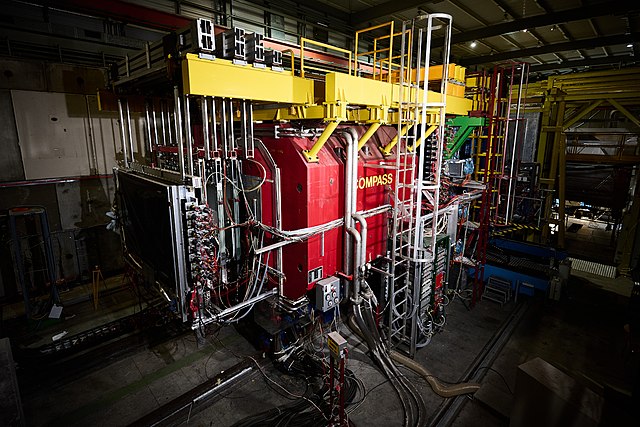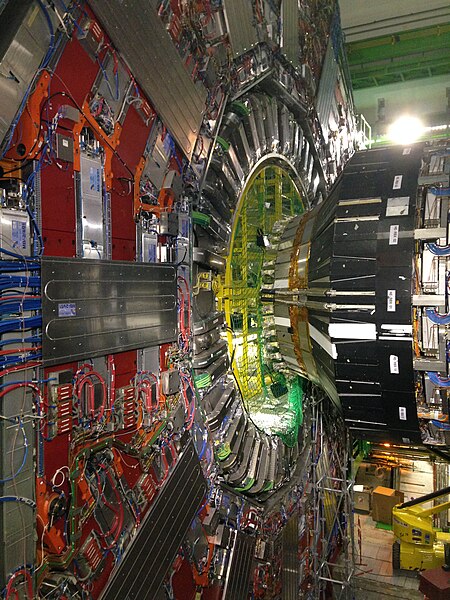A fixed-target experiment in particle physics is an experiment in which a beam of accelerated particles is collided with a stationary target. The moving beam consists of charged particles such as electrons or protons and is accelerated to relativistic speed. The fixed target can be a solid block or a liquid or a gaseous medium. These experiments are distinct from the collider-type experiments in which two moving particle beams are accelerated and collided. The famous Rutherford gold foil experiment, performed between 1908 and 1913, was one of the first fixed-target experiments, in which the alpha particles were targeted at a thin gold foil.
NA62 experimental area at CERN that fires high-energy protons from the Super Proton Synchrotron (SPS) into a stationary beryllium target.
COMPASS experimental area at CERN that fires muons and pions at a polarized target.
The Large Hadron Collider (LHC) is the world's largest and highest-energy particle collider. It was built by the European Organization for Nuclear Research (CERN) between 1998 and 2008 in collaboration with over 10,000 scientists and hundreds of universities and laboratories across more than 100 countries. It lies in a tunnel 27 kilometres (17 mi) in circumference and as deep as 175 metres (574 ft) beneath the France–Switzerland border near Geneva.
Superconducting quadrupole electromagnets are used to direct the beams to four intersection points, where interactions between accelerated protons take place.
The LHC protons originate from the small red hydrogen tank.
CMS detector for LHC
Lyn Evans, the project leader of the Large Hadron Collider






